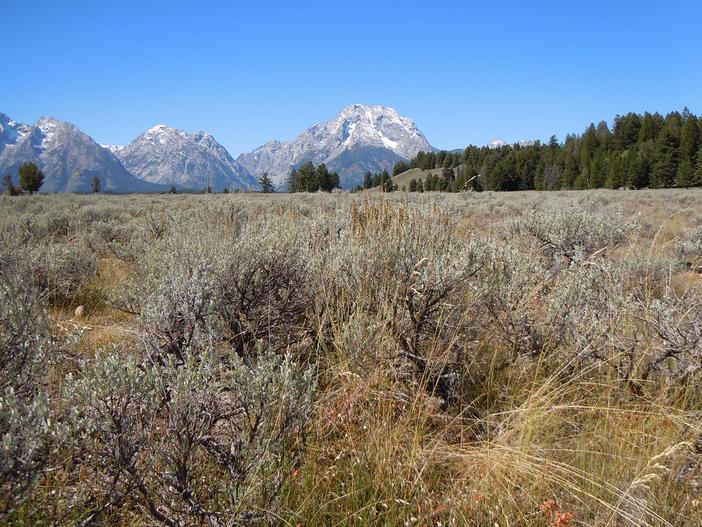Mountain Big Sagebrush
(Artemisia tridentata subsp. vaseyana)
Mountain Big Sagebrush (Artemisia tridentata subsp. vaseyana)
/
/

Matt Lavin
CC BY-SA 2.0
Image By:
Matt Lavin
Recorded By:
Copyright:
CC BY-SA 2.0
Copyright Notice:
Photo by: Matt Lavin | License Type: CC BY-SA 2.0 | License URL: https://creativecommons.org/licenses/by-sa/2.0/ | Uploader: Matt Lavin | Publisher: Flickr






















Estimated Native Range
Summary
Artemisia tridentata subsp. vaseyana, commonly known as Mountain Big Sagebrush, is a deciduous shrub native to the mountainous regions of the western United States, including the Great Basin, the Mojave Desert, and the Rocky Mountains. It thrives in high elevation habitats such as sagebrush steppe, montane meadows, and open woodlands. This subspecies is particularly adapted to cooler climates and is found at elevations typically ranging from 4,000 to 10,000 feet (1,200 to 3,000 meters). Mountain Big Sagebrush typically grows to a height of 2 to 4 feet (0.6 to 1.2 meters) with a similar spread, and has a rounded, irregular form.
The plant is characterized by its aromatic, silvery-gray foliage and small, yellowish flowers that bloom in late summer to early fall. The flowers are not particularly showy, but they are an important source of pollen and nectar for native pollinators. Mountain Big Sagebrush is valued for its ecological role in providing cover and food for wildlife, including a variety of birds and mammals. In cultivation, it is used for habitat restoration, erosion control, and as an ornamental in xeriscaping due to its low water requirements and ability to thrive in poor, well-drained soils. It prefers full sun and is tolerant of drought once established. While generally low-maintenance, it can be susceptible to root rot in poorly drained conditions and may be affected by sagebrush gall mites.CC BY-SA 4.0
The plant is characterized by its aromatic, silvery-gray foliage and small, yellowish flowers that bloom in late summer to early fall. The flowers are not particularly showy, but they are an important source of pollen and nectar for native pollinators. Mountain Big Sagebrush is valued for its ecological role in providing cover and food for wildlife, including a variety of birds and mammals. In cultivation, it is used for habitat restoration, erosion control, and as an ornamental in xeriscaping due to its low water requirements and ability to thrive in poor, well-drained soils. It prefers full sun and is tolerant of drought once established. While generally low-maintenance, it can be susceptible to root rot in poorly drained conditions and may be affected by sagebrush gall mites.CC BY-SA 4.0
Plant Description
- Plant Type: Shrub
- Height: 1-3 feet
- Width: 1-3 feet
- Growth Rate: Moderate
- Flower Color: Yellow
- Flowering Season: Summer
- Leaf Retention: Deciduous
Growth Requirements
- Sun: Full Sun
- Water: Very Low
- Drainage: Fast
Common Uses
Deer Resistant, Drought Tolerant, Erosion Control, Low Maintenance
Natural Habitat
Native to sagebrush steppe, montane meadows, and open woodlands in high elevation habitats of the western United States
Other Names
Common Names: Vasey Sagebrush, Vasey’s Sagebrush, Big Sagebrush, Mountain Big Sagebrush
Scientific Names: , Artemisia tridentata subsp. vaseyana, Artemisia tridentata var. pauciflora, Artemisia tridentata var. vaseyana, Artemisia vaseyana, Seriphidium tridentatum subsp. vaseyanum, Seriphidium vaseyanum,
GBIF Accepted Name: